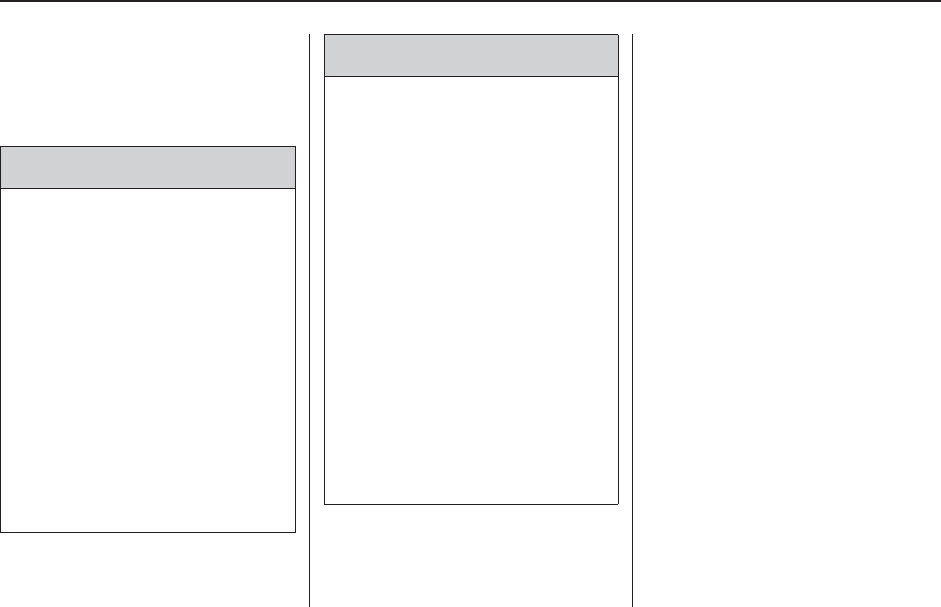
A label on the sun visor says,
“Never put a rear-facing child seat
in the front.” This is because the risk
to the rear-facing child is so great,
if the airbag deploys.
{ CAUTION
A child in a rear-facing child
restraint can be seriously
injured or killed if the right
front passenger airbag inflates.
This is because the back of
the rear-facing child restraint
would be very close to the
inflating airbag. A child in a
forward-facing child restraint
can be seriously injured or
killed if the right front passenger
airbag inflates and the
passenger seat is in a forward
position.
(Continued)
CAUTION (Continued)
Even if the passenger sensing
system has turned off the right
front passenger frontal airbag
and seat-mounted side impact
airbag (if equipped), no system
is fail-safe. No one can
guarantee that an airbag will
not deploy under some unusual
circumstance, even though the
airbag(s) are off.
Secure rear-facing child
restraints in a rear seat, even
if the airbag(s) are off. If you
secure a forward-facing child
restraint in the right front
seat, always move the front
passenger seat as far back as
it will go. It is better to secure
the child restraint in a rear seat.
The passenger sensing system is
designed to turn off the right front
passenger’s frontal airbag and
seat-mounted side impact airbag if:
• The right front passenger seat is
unoccupied.
• The system determines that an
infant is present in a rear-facing
infant seat.
• The system determines that a
small child is present in a child
restraint.
• The system determines that
a small child is present in a
booster seat.
• A right front passenger takes
his/her weight off of the seat for
a period of time.
• The right front passenger seat is
occupied by a smaller person,
such as a child who has outgrown
child restraints.
• Or, if there is a critical problem
with the airbag system or the
passenger sensing system.
Seats and Restraints 1-31


















